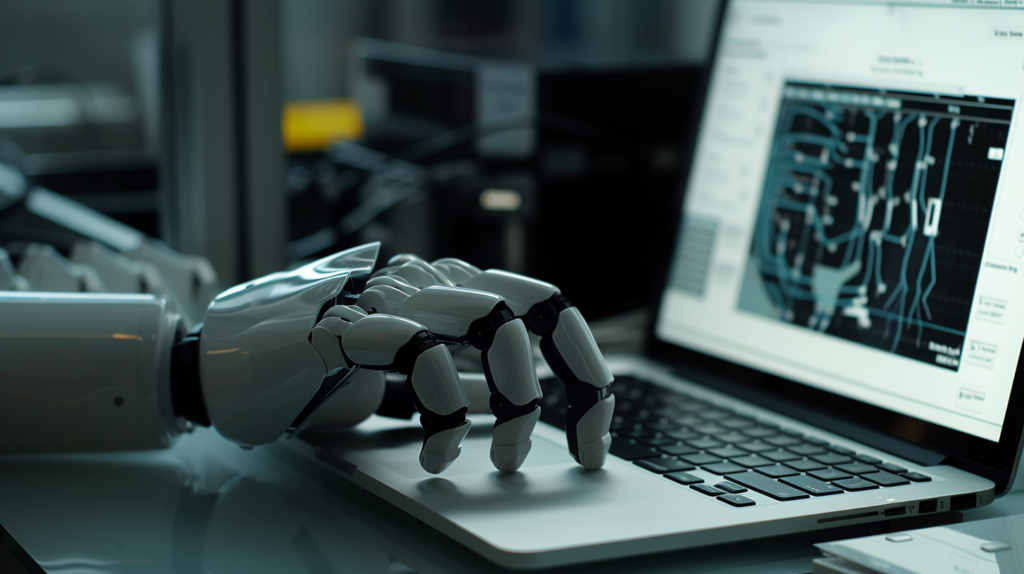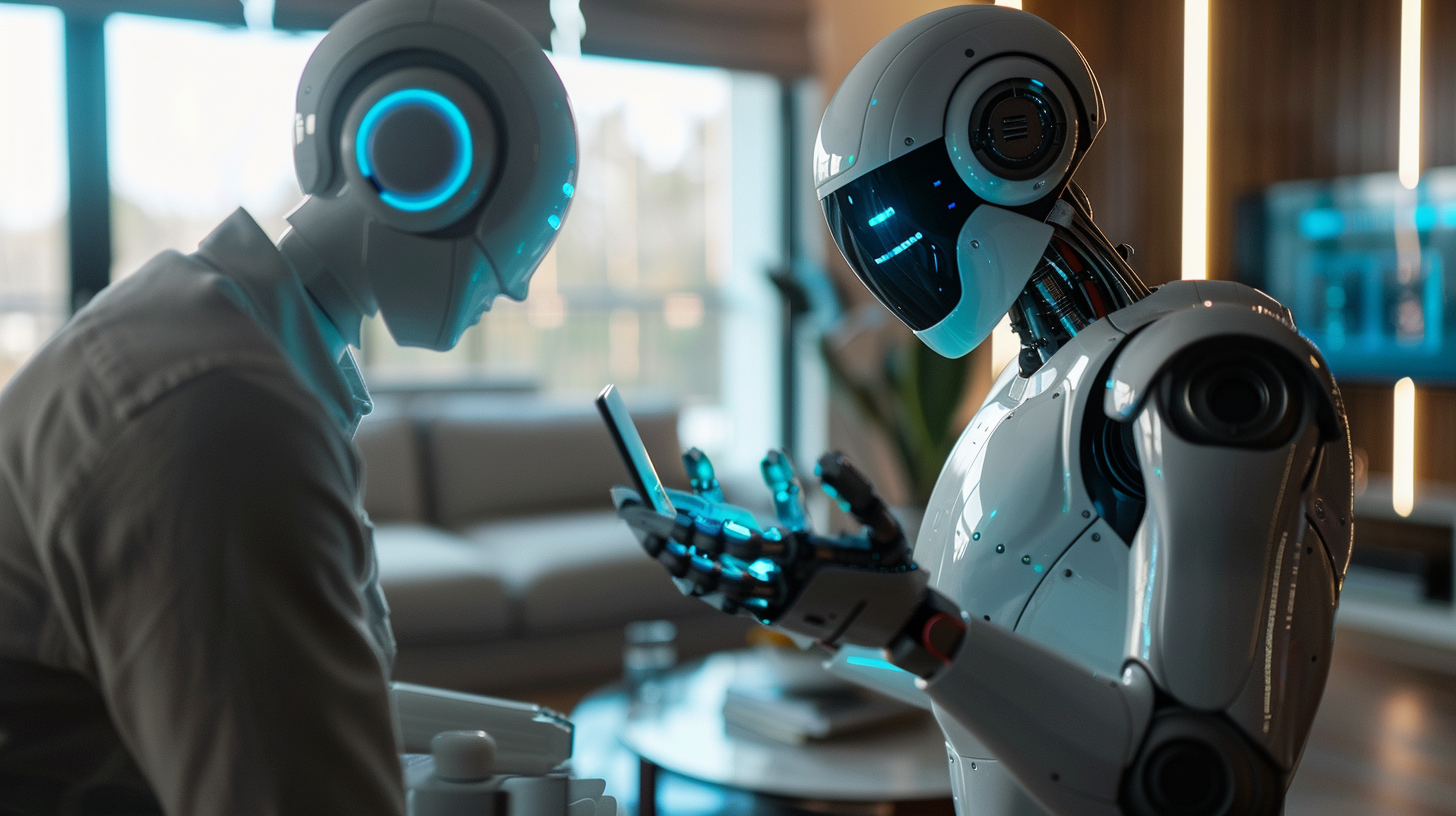It was only a few years ago when the concept of artificial intelligence (AI) replacing humans for some tasks seemed like such a far-fetched scenario. Today, this is our reality—and generative AI is far from done showing its true powers.
This cutting-edge field of AI explores the capacity of machines to learn, imagine, and create entirely new content that astounds and inspires.
From generating realistic images and music to crafting compelling stories and even designing novel solutions, generative AI is really pushing the boundaries of what is possible—and we are definitely here for it.
Understanding generative AI

Generative AI is a type of artificial intelligence that uses advanced machine learning algorithms to create unique content or ideas from existing content and data.
By learning from vast amounts of data, generative AI tools can produce output that resembles the original input without necessarily repeating or copying it.
Before, only data scientists, computer software developers, and technology experts meddled with AI. Today, AI and machine learning are at the tips of our fingertips.
How does artificial intelligence work?
In a nutshell, generative AI operates on the principles of using machine learning models and neural networks to generate new and creative content.
AI makes use of large datasets to capture and understand underlying patterns. Then, they produce outputs that either mimic or expand upon the same data set. Here’s a step-by-step explanation of how generative AI works:
1. Learning and modeling
Generative AI systems begin by learning from extensive datasets and training data, which can include images, text, audio, or any other form of big data. Through machine learning, the AI analyzes this information to identify hidden patterns, relationships, and structures. This process involves training deep neural networks, which are designed to capture complex features and generate meaningful representations of the data.
2. Generating outputs
Once the machine learning algorithm and phase are complete, generative artificial intelligence models can start producing outputs. The specific technique, though, depends on the desired content type.
For instance, Generative Adversarial Networks (GANs) consist of two neural networks—a generator and a discriminator—which compete against each other:
- The generator aims to create realistic outputs
- The discriminator’s role is to differentiate between generated and real data.
Through a training process, GANs continually refine their outputs to become more and more realistic.
Current trends and observations about the impact of generative AI models
Generative AI has found application in a wide range of domains, transforming industries and unlocking new possibilities.
Here are some notable examples:
- Art and design: Generative AI applications can create stunning artwork, designs, and graphics. Artists and designers leverage AI models to generate unique visual compositions, explore new styles, and aid in the creative process.
- Content generation: Text generation models, like OpenAI’s GPT-3, have gained popularity for their ability to produce coherent and contextually relevant written content in plain language. These tools are now used to assist in generating articles, stories, poetry, and even chatbot responses. For instance, a call center may train a chatbot to recognize customer requests and provide appropriate responses, thereby improving efficiency and customer satisfaction.
- Image generation and video synthesis: Generative artificial intelligence can generate realistic images and videos. These are now used in areas such as virtual reality, special effects, product visualization, and even deepfake detection and prevention. It is also a powerful tool for rapid prototyping and innovation. By generating multiple variations of a design or concept, it enables quick exploration of ideas, accelerating the pace of innovation in industries such as product design, architecture, and fashion.
- Music composition: AI algorithms have the ability to create original music compositions that either imitate various existing genres or even develop entirely new styles. This technology assists musicians, composers, and producers in exploring fresh musical ideas and expanding their creative repertoire.
- Healthcare industry: Generative AI models are now being utilized to improve medical imaging and diagnostics. It helps create synthetic data and images that can be used for training and testing medical imaging algorithms. This then leads to enhanced accuracy and efficiency when it comes to disease detection.
- Personalization and recommendation systems: Artificial intelligence tools can create personalized experiences by generating tailored recommendations, advertisements, and product suggestions. By analyzing user preferences and historical data, AI models can generate content specifically tailored to individual tastes, enhancing user engagement and satisfaction.
One thing to note: Generative AI is continually evolving. Researchers are continuing to push the boundaries of what it can achieve. As the field progresses, generative AI systems will most likely play an increasingly vital role in shaping the future across diverse industries.
Popular generative AI interfaces and models

G5 major benefits of generative AI for businessesenerative AI has witnessed tremendous advancements, giving rise to a multitude of powerful models and interfaces that facilitate creative expression and problem-solving. These models and interfaces have garnered significant attention and have been widely adopted across various domains by many organizations.
Here are 5 notable examples of popular generative AI models and interfaces:
- StyleGAN: Developed by NVIDIA, StyleGAN is a state-of-the-art type of generative adversarial network that can synthesize high-resolution, photorealistic images. Such software enables the generation of highly detailed and diverse images, allowing users to control various aspects such as facial attributes, background, and artistic style. StyleGAN has found applications in digital art, fashion, and advertising, revolutionizing the way images are created and manipulated.
- GPT-3 (Generative Pre-trained Transformer 3): GPT-3, developed by OpenAI, is a cutting-edge language model that has garnered significant attention for its natural language processing capabilities. With 175 billion parameters, GPT-3 can generate coherent and contextually relevant text across a wide range of topics. It has been used for content generation, chatbots, language translation, and even assisting in coding and software development.
- DeepArt: DeepArt is an online platform that employs deep learning algorithms to transform photos into artistic masterpieces. It analyzes the content and style of an input image and then generates a transformed image with a specific artistic style—emulating famous paintings or custom styles provided by users.
- Magenta: Magenta, a Google Research project, focuses on generative AI models for music and art. It offers a range of models and tools for various creative tasks. These include generating melodies, harmonies, and drum tracks, and creating artistic visualizations.
- DALL-E: DALL-E, also developed by OpenAI, is a remarkable generative model that creates unique images from textual descriptions. Users can describe a concept or scene with textual prompts. Then DALL-E would generate a corresponding image—showcasing the potential of generative AI in bridging the gap between language and visual content.
As generative models continue to evolve, so do the types of data that can be used as inputs and outputs in these models.
From text and images to sounds and animations, generative AI models are becoming more versatile and capable of producing a wide range of content due to deep learning capabilities. What does this mean? This opens up new possibilities for businesses and industries to further enhance their processes and drive innovation.
5 major benefits of generative AI for businesses

- Improves efficiency and saves time and costs. Generative AI automates and streamlines processes, leading to significant time and cost savings. By optimizing resource allocation, businesses can achieve higher productivity, faster time-to-market, and reduced operational expenses.
- Automates tasks and revolutionizes processes. Automating complex tasks that traditionally require human expertise can free up human resources to focus on more strategic or creative aspects of their work. This automation accelerates processes and ensures consistent outputs.
- Enhances creativity and innovation. Machine learning also enables AI to generate novel ideas, designs, and content, acting as a source of inspiration or a brainstorming partner for artists, designers, and creative professionals.
- Augments human capabilities. It can work in collaboration with human experts by providing suggestions, generating alternative solutions, or automating repetitive tasks. By leveraging the combined strengths of both humans and machines, the possibilities are limitless.
- Analyzes intricate data for more informed decision-making. By analyzing complex data using AI algorithms, generative AI can assist in more informed decision-making and provide more comprehensive and granular insights compared to traditional analytics. Generative AI models can predict trends, recommend strategies, and simulate scenarios, enabling businesses to make data-driven and evidence-based choices.
Limitations of generative AI
Despite its many benefits, generative AI does come with certain limitations and challenges that need to be addressed. Here are some of its key limitations:
- Data dependency and bias. If the organization’s own data is incomplete, biased, or limited in scope, it can lead to biased or skewed outputs. Additionally, generative AI models may struggle to generate content beyond the scope of the training data. High-quality data is a must to make the generative ai models’ outputs top-tier.
- Ethical and legal concerns. As AI models generate content that resembles existing works, questions regarding attribution and ownership rights can arise. Additionally, the potential misuse of generative models for creating fake or misleading content necessitates ethical considerations and regulatory frameworks. AI-generated art, for example, is already making the rounds on social media as some users create art using the digital likeness of actual people or celebrities.
- Lack of contextual understanding. There still is no substitute for human intelligence. While they can generate coherent content, generative AI tools may not fully grasp the underlying meaning or goals. Of course, AI capabilities—while impressive and helpful, are still very different from how the human brain works. This limitation can result in outputs that are contextually inaccurate or fail to capture the intended essence of the input.
- Quality control. Ensuring the quality of results and mitigating the risk of misuse and abuse is crucial. Organizations should maintain a human in the loop to assess the output of the generative AI model prior to its publication or use.
How can businesses maximize generative AI?
Marketing and advertising:
- Personalized marketing campaigns: AI can analyze customer data and preferences to generate personalized marketing messages, recommendations, and targeted advertisements.
- Content generation: AI can create engaging blog posts, social media content, and product descriptions, saving time for content creators.
- Customer segmentation: AI can analyze customer behavior and demographics to segment the customer base for targeted marketing strategies.
Sales and lead generation
- Lead scoring and prioritization: AI can analyze historical sales data and customer interactions to prioritize leads based on their likelihood of conversion.
- Sales forecasting: Many generative AI models can analyze sales data, identify patterns, predict market trends, and pinpoint external factors to generate accurate sales forecasts.
- Sales outreach: You can even have your very own AI sales assistant using tools like ChatGPT. You can check out some custom prompts here.
Customer service
- Chatbots and virtual assistants: AI-powered chatbots can handle customer inquiries, provide instant support, and resolve common issues, reducing the workload on customer service teams.
- Sentiment analysis: A generative AI model can analyze customer feedback, social media posts, and reviews to gauge customer sentiment and identify areas for improvement in customer service.
- Voice recognition and Natural Language Processing: An AI system can interpret and understand customer inquiries or complaints, improving response accuracy and efficiency.
Human resources
- Resume screening: You can use generative AI to analyze resumes and job applications, match candidates to job requirements, and shortlist qualified candidates, saving time for HR professionals.
- Talent acquisition: AI can assist in talent sourcing by identifying candidates with the desired skills and qualifications from large databases and professional networks.
How to integrate and use generative AI tools in business operations
First, identify appropriate use cases. Start by identifying the areas in your business where a generative AI model can bring the most value. This initial step involves assessing the potential impact of generative AI on business functions and their specific business processes and identifying suitable applications.
Next, you need to construct a prioritized portfolio of projects where you plan to include the use of AI. This can be achieved through workshops or by engaging a consultant, who can provide expert guidance and recommendations on the best way to integrate generative AI into their existing workflows.
Once you’re ready to roll with your projects, it’s important that you’re able to foster human-AI collaboration. AI adoption is currently going well—with 61% of workers reporting that AI applications and tools have helped to boost their productivity. Position generative AI as a supportive tool rather than a replacement for human expertise. Encourage employees to provide input, guide the various generative models and AI outputs, and incorporate their domain expertise.
Don’t forget to establish ethical guidelines. Consider the implications of AI-generated content, potential biases, and the responsible use of AI technology. Ensure that the generated outputs align with your organizational values and meet legal and regulatory requirements.
As with any business initiative, you will need to measure and evaluate performance. Establish key performance indicators (KPIs) to measure the impact and effectiveness of generative AI tools. Monitor how it contributes to efficiency gains, cost savings, improved customer experiences, or other relevant metrics.
Finally, make sure that you are updated on all the latest developments. At the rate that AI is evolving, who knows what will be possible in a few months’ time? Stay alert about the latest research, trends, and emerging technologies. Participate in webinars, conferences, industry events, and engage with AI communities to exchange knowledge, learn from others, and identify potential opportunities.
Embrace generative AI solutions for an impactful business transformation

There’s no doubt about it. Generative AI has emerged as a powerful technology with far-reaching implications across industries, transforming the way we create, innovate, and interact.
From its ability to automate tasks, save significant resources, and enhance creativity to its potential for improving decision-making and optimizing processes, generative AI offers numerous benefits for businesses. It is even changing the way that users interact with businesses.
By embracing generative AI, organizations can unlock a new level of growth and drive success in an ever-evolving business landscape.
Whether you’re already knee-deep in the generative AI world, or still trying to tip-toe your way around it—TaskDrive’s AI-powered virtual assistants are here to support you.
Our experts are more than ready and willing to help you craft a tailored AI-powered solution for your business. Book a call with TaskDrive today and discover what you might be missing out on.



